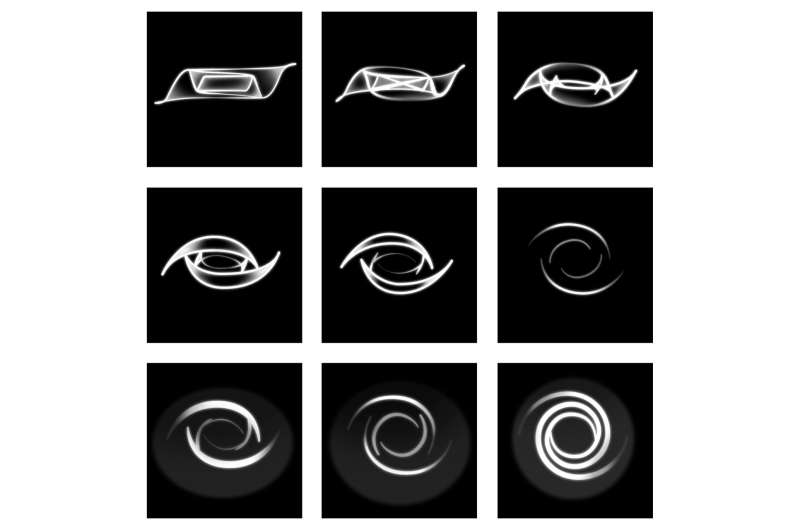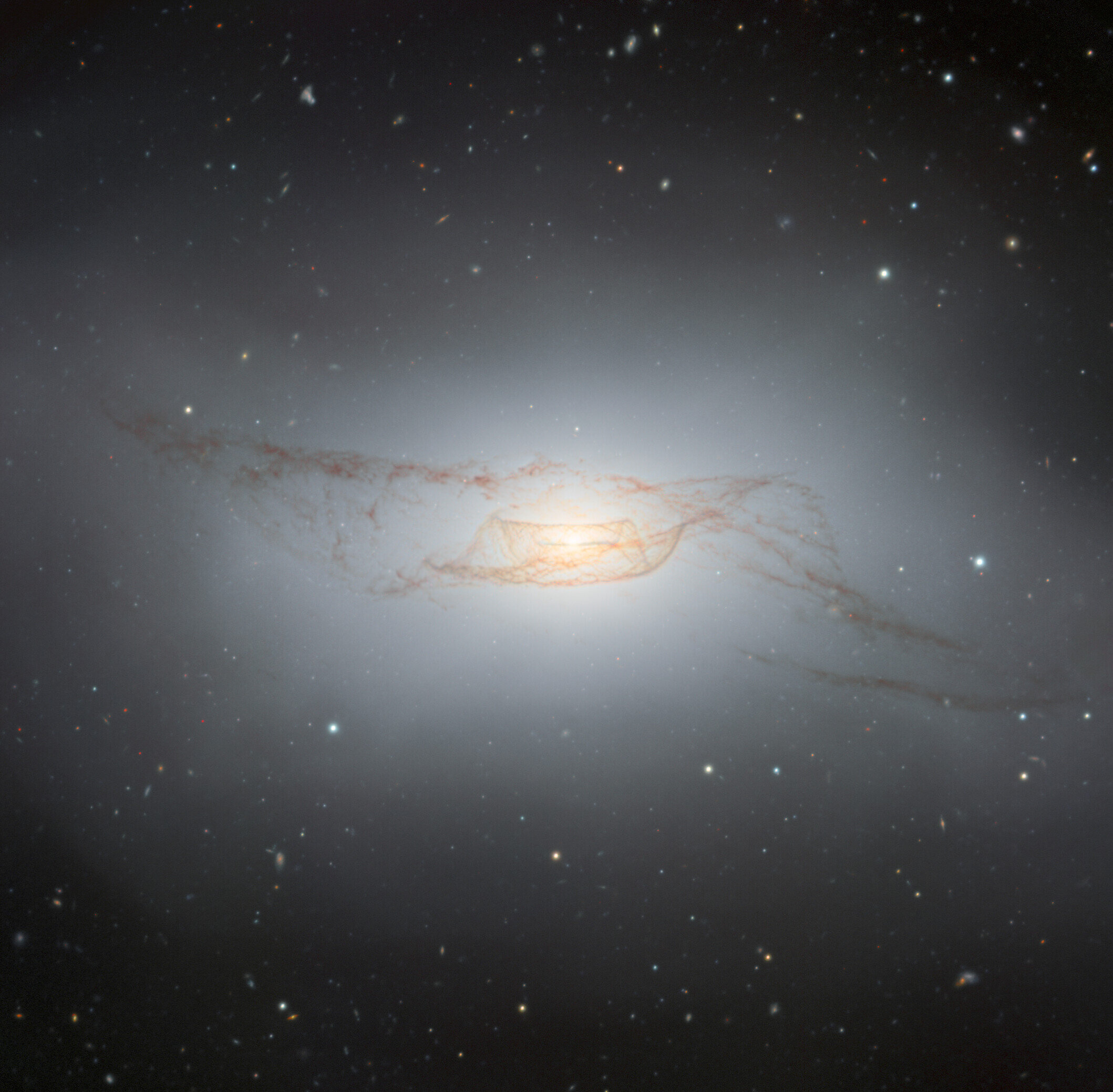The lenticular galaxy NGC 4753, captured by the Gemini South telescope, one half of the International Gemini Observatory operated by NSF’s NOIRLab, is a truly remarkable object. Its prominent and complex network of dust lanes that twist around its galactic nucleus define its ‘peculiar’ classification and are the likely result of a galactic merger with a nearby dwarf galaxy about 1.3 billion years ago.
An astounding number of galaxies populate the observable universe, with recent estimates placing that number anywhere from 100 billion to 2 trillion. And, akin to snowflakes, no two are exactly alike. But depending on their visual appearance and physical features they can be divided into four broad classes: elliptical, lenticular, irregular and spiral, with many subclasses in between. However, galaxies are dynamic objects that evolve over time as they interact with their surrounding environment, meaning that an individual galaxy may fall under multiple classifications throughout its lifetime.
Such is thought to be the case with NGC 4753, which astronomers hypothesize began as a normal lenticular galaxy but morphed into the more specific peculiar class after a merger with a nearby dwarf galaxy over a billion years ago.
Discovered by astronomer William Herschel in 1784, NGC 4753 displays some truly fascinating features. In this image captured by the Gemini South telescope, one half of the International Gemini Observatory operated by NSF’s NOIRLab, the galaxy’s intricate dust lanes are a sight to behold.
NGC 4753 is located about 60 million light-years away in the constellation Virgo. It is a member of the NGC 4753 Group of galaxies within the Virgo II Cloud—a series of at least 100 galaxy clusters and individual galaxies stretching off the southern edge of the Virgo Supercluster.

NGC 4753’s distinct dust lanes, appearing to twist and turn around the galaxy’s nucleus, have long intrigued astronomers, and are the irregular features that give it its ‘peculiar’ classification. Seen nearly edge-on from Earth, this galaxy can appear rather mystifying. But in 1992 a team of astronomers led by Tom Steiman-Cameron, now a senior research scientist at Indiana University, published a detailed study of NGC 4753 in which they found that its complicated shape is likely the result of a merger with a small companion galaxy.
“Galaxies that gobble up another galaxy often look like train wrecks,” said Steiman-Cameron, “and this is a train-wreck galaxy.”
Galaxy mergers occur when two (or more) galaxies collide, causing their material to mix and significantly altering the shape and behavior of each galaxy involved. In the case of NGC 4753, it is thought that the once standard lenticular galaxy merged with a nearby gas-rich dwarf galaxy about 1.3 billion years ago.
The gas of the dwarf galaxy, coupled with bursts of star formation triggered by this galactic collision, injected the system with vast amounts of dust. The galaxy’s inward spiral due to gravity then caused the accumulated dust to smear out into a disk shape. And this is where the story gets interesting.
Steiman-Cameron and his team found that a phenomenon known as differential precession is responsible for NGC 4753’s entangled dust lanes. Precession occurs when a rotating object’s axis of rotation changes orientation, like a spinning top that wobbles as it loses momentum. And differential means that the rate of precession varies depending on the radius.
In the case of a dusty accretion disk orbiting a galactic nucleus, the rate of precession is faster toward the center and slower near the edges. This varying, wobble-like motion results from the angle at which NGC 4753 and its former dwarf companion collided and is the cause of the strongly twisted dust lanes we see wrapped around the galaxy’s luminous nucleus today.
“For a long time nobody knew what to make of this peculiar galaxy,” said Steiman-Cameron. “But by starting with the idea of accreted material smeared out into a disk, and then analyzing the three-dimensional geometry, the mystery was solved. It’s now incredibly exciting to see this highly-detailed image by Gemini South 30 years later.”
Though NGC 4753 appears to be exceptionally unique, this may be a misconception. According to Steiman-Cameron, if one were to view the twisted dusty disk from directly above it likely would look no different than a standard spiral galaxy. It’s due only to our fortuitous, nearly edge-on view that we are able to see the full scope of its tangled dust lanes, meaning these peculiar features may not be as rare in the universe as they seem.
Citation:
Gemini South captures twisted dusty disk of NGC 4753, showcasing the aftermath of past merger (2024, January 25)
retrieved 26 January 2024
from https://phys.org/news/2024-01-gemini-south-captures-dusty-disk.html
This document is subject to copyright. Apart from any fair dealing for the purpose of private study or research, no
part may be reproduced without the written permission. The content is provided for information purposes only.


